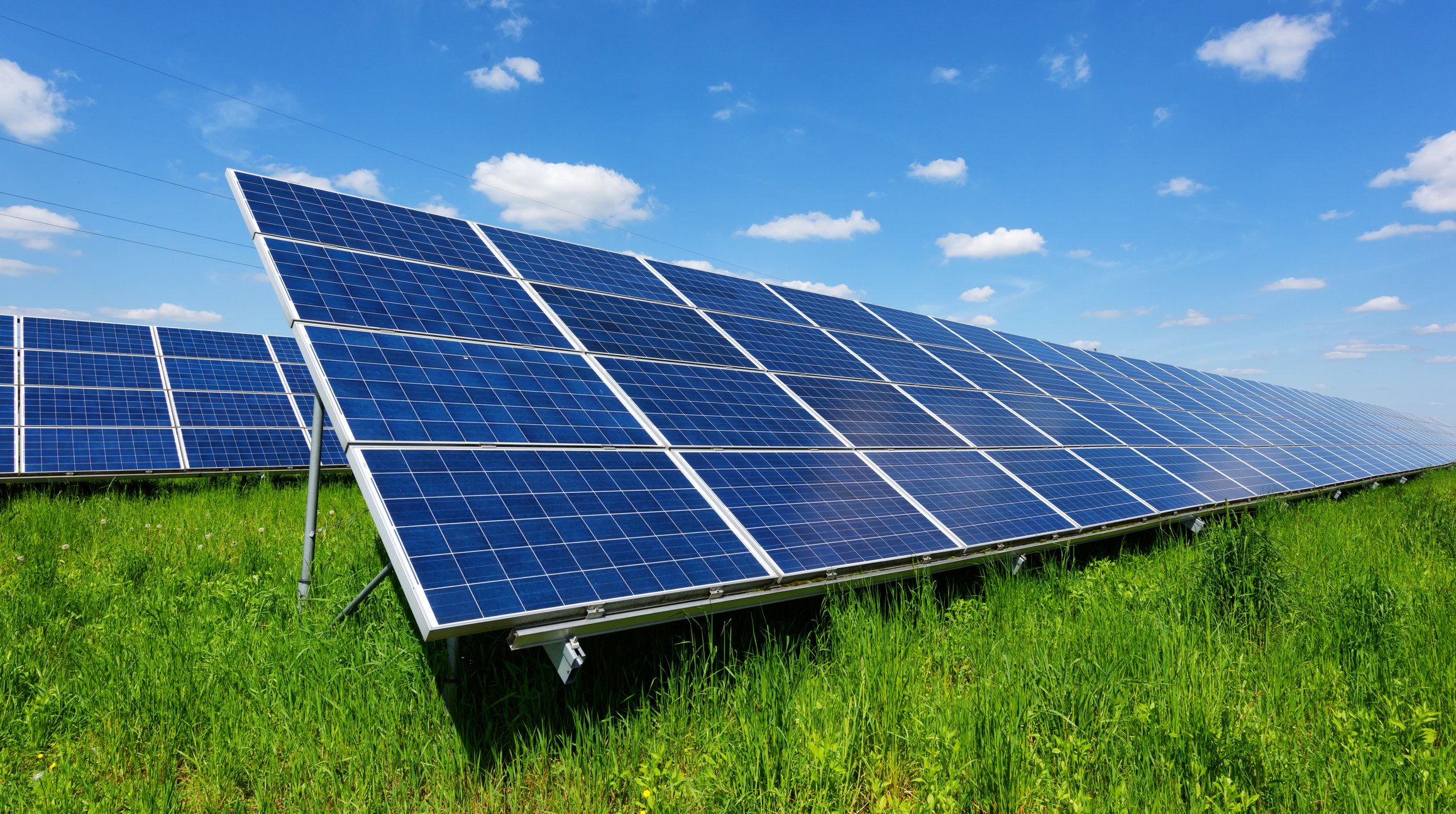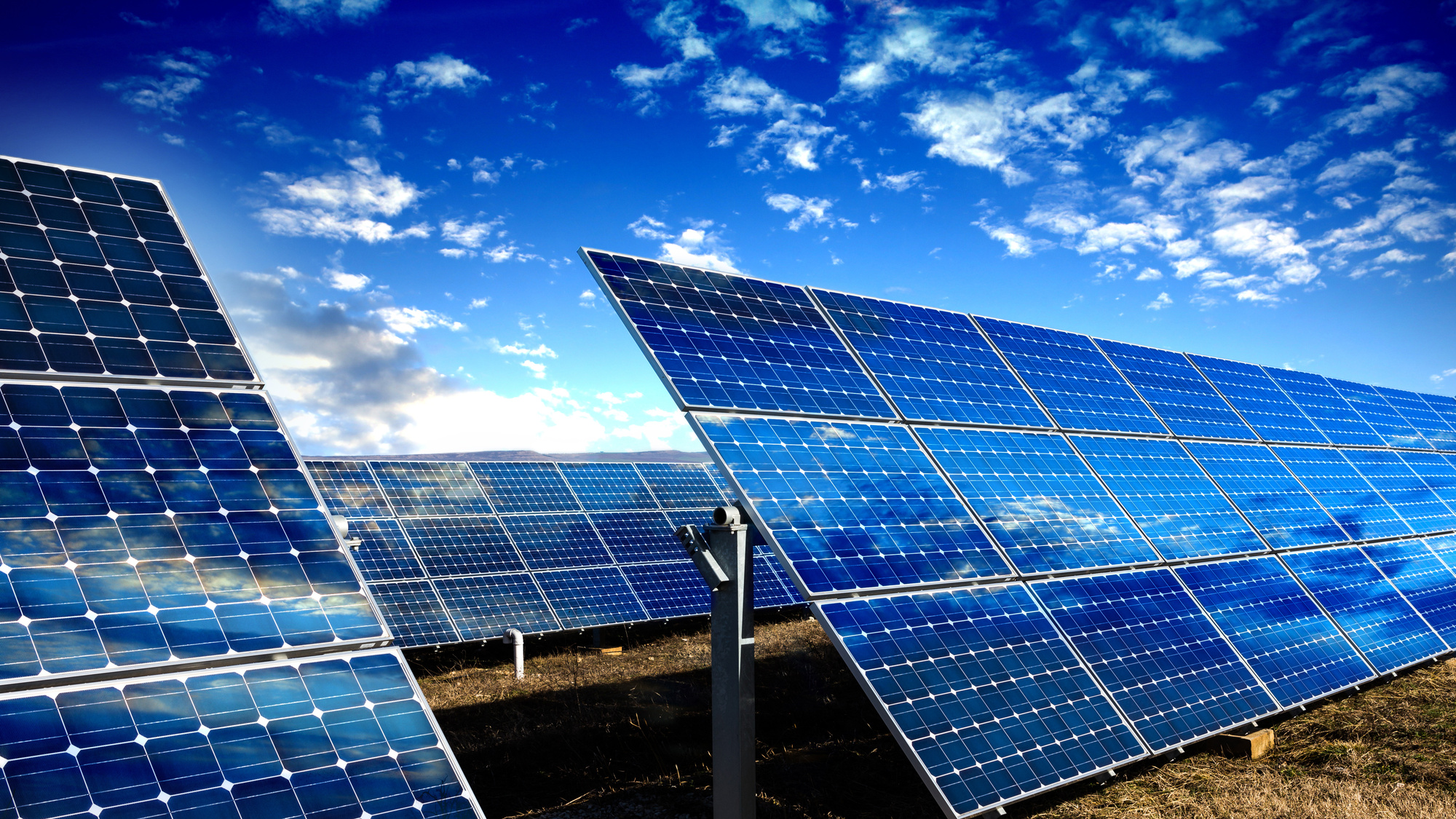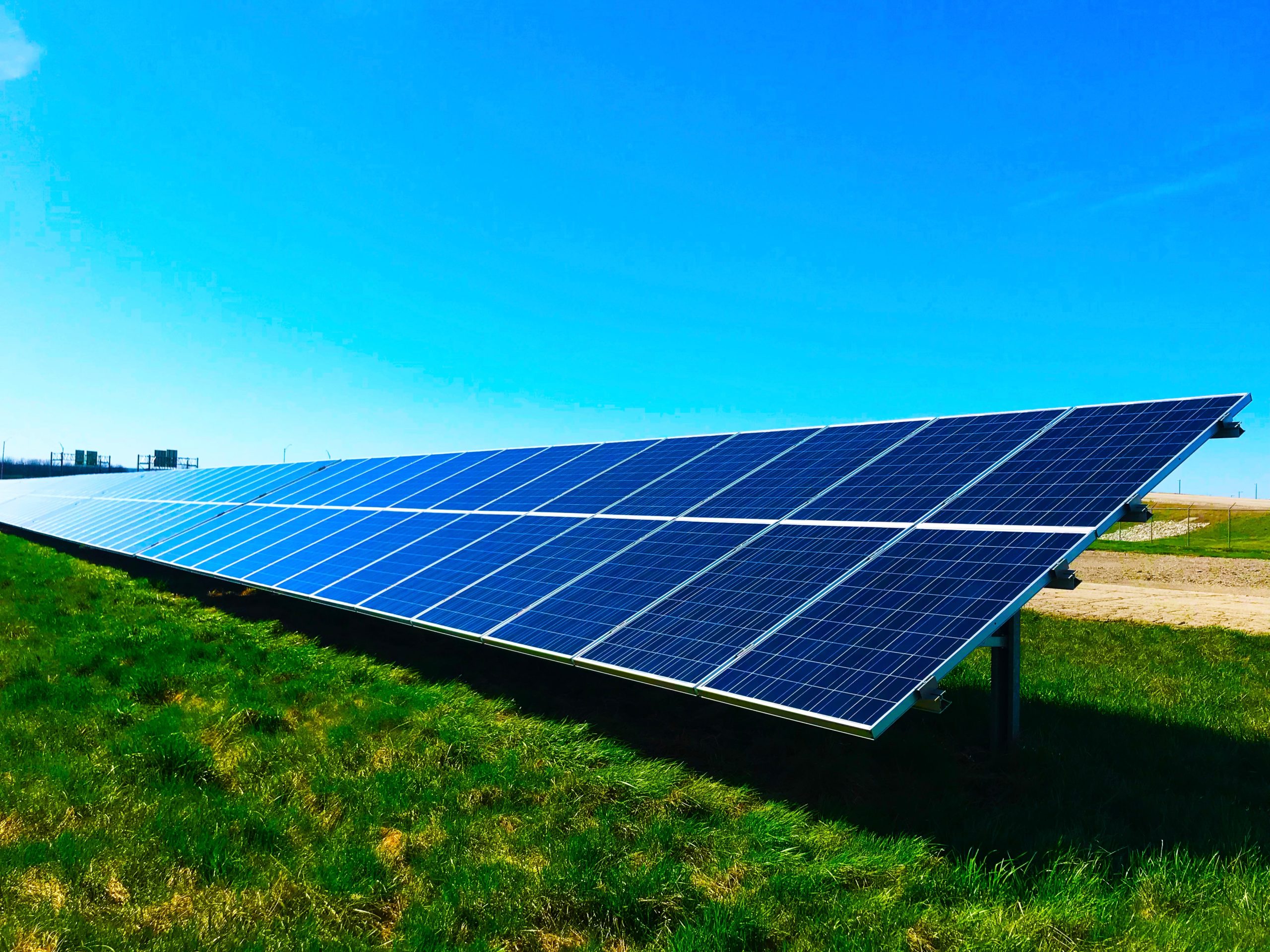The Science Of Solar Panels In Depth
Silicon solar cells, through the photovoltaic effect, absorb sunlight and generate flowing electricity. This process varies depending on the type of solar technology, but there are a few steps common across all solar photovoltaic cells.
First, light strikes a photovoltaic cell and is absorbed by the semiconducting material it is made from . These incoming photons cause electrons in the silicon to be knocked loose, which will eventually become the solar electricity you can use in your home.
There are two layers of silicon used in photovoltaic cells, and each one is specially treated, or doped, to create an electric field, meaning one side has a net positive charge and one has a net negative charge. This electric field causes loose electrons to flow in one direction through the solar cell, generating an electrical current. The elements phosphorus and boron are commonly used to create these positive and negative sides to a photovoltaic cell.
Once an electrical current is generated by loose electrons, metal plates on the sides of each solar cell collect those electrons and transfer them to wires. At this point, electrons can flow as electricity through the wiring to a solar inverter and then throughout your home.
Polycrystalline Solar Panels: Middle Of The Road
Polycrystalline solar panels are typically cheaper than monocrystalline solar panels. This is because the cells are produced from silicon fragments rather than a single, pure silicon crystal. This allows for a much simpler cell manufacturing process, thus costing less for manufacturers and eventually end-users.
Its True: Making Solar Panels Requires Energy
Yes, solar panels require energy to be produced. The factory that makes the solar panels uses energy. Energy is used to transport solar panels from the factory to your city. Each component involved in the panels requires energy to produce. The raw resources in solar panels need energy to be extracted from the ground.
All of that energy debt can add up quickly. But does it really outweigh the amount of energy produced by solar panels?
Fortunately, one group of scientists got to the bottom of the issue.
Read Also: Is Tesla Installing Solar Roofs Yet
Why These Particular Elements
Out of all the elements in the periodic table, why use silicon as the main component of a solar cell, and why dope with phosphorus and boron?
Silicon is the most common go-to material for a photovoltaic cell because the maximum wavelength of energy it absorbs is around 800 nanometres, which is close to the peak of the radiation emitted by the Sun. The Sun emits a spectrum of radiation, ranging from around 300 nanometres to 2,000 nanometres, but by far the majority of it is within the range of 420 to 700 nanometres.
The reason why phosphorus and boron are most often used as the doping agents is a bit more complicated. In order to create the flow of electrons within the solar cell, the electrons must be excited out of their stable ground state up into the higher energy level needed for them to move from the p-type to the n-type side. This amount of energy is equivalent to the difference in electronegativity between the two layers . Any less and it wont be enough to knock the electron free, and any extra energy would be wasted.
It turns out that the difference in electronegativity between phosphorus-doped and boron-doped silicon is pretty much equal to the energy provided by one photon of sunlight, making them the ideal doping agents for a silicon solar cell.
Do Solar Panels Store Energy

In short, no they dont. This has been one of the biggest challenges for solar developers. While its great to generate clean electricity, days with less sun and lower production might mean you have to tap into the power grid anyway. But there are options.
Many states offer net metering, which allows you to sell any excess energy you produce on sunny days to the utility company for credit. Then when those rainy days come along , you can pull power from the grid with those points you racked up.
Also Check: How Much Solar Panels To Run A House
How Many Watts Of Energy Does A Solar Panel Produce Individual Products Compared
The graphic below presents a view of power output from many of the manufacturers who supply solar panels to the U.S. market. Because panel manufacturers often produce more than one line of solar panel models, the power output of most companies has a significant range. The table below lists the minimum, maximum, and average power outputs of the solar panels within each manufacturers portfolio.
Electricity output of solar panel manufacturers
| Solar Panel Manufacturer |
|---|
| 332 |
Explore Your Solar Options Today With Energysage
For any homeowner in the early stage of shopping for solar that would just like a ballpark estimate for an installation, try our Solar Calculator that offers upfront cost and long-term savings estimates based on your location and roof type. For those looking to get and compare quotes from local contractors today, check out the EnergySage Marketplace.
Read Also: What Battery Is Best For Solar System
You Can Live A Less Stressful Life
Honestly One big thing solar gives people is peace of mind. Once you have affordable bills, it really makes a big change in your life and your lifestyle. It can help you relax and live a more stress-free life knowing your energy bills are forever low.
Not only this, but you know that you are helping society and fighting against climate change. One of the most stressful things is being at the forefront of an energy provider running up prices.. With solar, you have the peace of mind that you are going to be good for the next 25 years.
What Are Bifacial Solar Panels
Bifacial solar panels can capture sunlight from both the front and back of the panel, thus producing more electricity than comparably sized, traditional solar panels. Many bifacial solar panels will have a transparent back sheet so that sunlight can go through the panel, reflect off the ground surface and back upwards towards the solar cells on the back side of the panel. These solar panels are typically manufactured with monocrystalline solar cells, but polycrystalline bifacial solar panels exist as well.
Read Also: Can I Get An Ein For A Sole Proprietorship
Solar Batteries To Store Extra Energy
Battery storage is another option for storing solar energy. Companies such as Tesla, LG, and sonnenBatterie are producing batteries that make solar plus storage for homeowners more available. Batteries give the option of more independence from the grid. You can pull energy from your battery at night, rather than switching to utility power when the sun stops shining.
Battery backup also comes in handy in cases of power blackouts. You could run your appliances and electronics using a solar battery for a day or two. Thats generally enough time for your utility to get things up and running again. Of course, your solar panels will kick back in when its sunny as well, giving your battery a break.
Thin Film Solar Panels
You may have heard of thin film types of solar panels. They are a newer type of solar panel and less frequently used for homes. But they are growing in popularity.
The thin film panel gets its name from how its produced. Layers of semiconductor materials are rolled out as a film on a surface.
Thin film solar panels tend be less efficient than crystalline solar panels, and it requires a lot of roof space. They also tend to degrade more quickly, so companies may offer shorter warranties to homeowners.
But thin film is also inexpensive and more flexible than crystalline solar cells. They can be manufactured into shingles. So for those who dont like the appearance of solar panels on a roof, thin film is a good alternative. There may be local solar rebate incentives for installing these types of solar panels.
Keep in mind that solar manufacturing is a very competitive field. Researchers keep coming up with ways to make solar cells more efficient. The latest technologies use solar inks, dyes, mirrors, and plastics.
Find Local Pros
Read Also: Do I Qualify For Solar Tax Credit
Solar Panel Output Per Day
Work out how much electricitymeasured in kilowatt hours your panels would produce each day by using this formula:
Size of one solar panel x 1,000
That figure x Efficiency of one solar panel
That figure x Number of sun hours in your area each day
Divide by 1,000
Read more on efficiency below.
To estimate the number of sun hours in your area, use this calculator.
Example
- Divide by 1,000:
- 1,440 ÷ 1,000 = 1.44 kWh per day
*The number of sun hours varies greatly throughout the year , and will be much lower during winter months in particular.
Why Does Solar Panel Output Matter Calculating Panel Wattage

Power output is an important metric for your home or commercial solar panel system. When you buy or install a solar photovoltaic energy system, the price you pay is typically based on the total power output of the solar panels in the system .
Solar panel wattage represents a solar panels theoretical power production under ideal sunlight and temperature conditions. Wattage is calculated by multiplying volts x amps where volts represents the amount of force of the electricity and amperes refers to the aggregate amount of energy used. The financial savings you derive from the solar system is a result of the electric energy that it generates over time .
Don’t Miss: How Much Solar Energy Do I Need For My Home
It Does Not Harm The Environment
One of the main advantages of solar energy is that it is a renewable resource. Thus, unlike traditional energy sources such as coal, it does harm the environment by emitting toxic material into the surrounding. It is, therefore, one of the energies whose increased use contributes to a sustainable future.
Basic Steps In Solar Energy Generation And Transmission
Now that we have a basic idea of the generation and flow of solar electricity, lets take a deeper dive into the science behind the solar photovoltaic panel.
Recommended Reading: How To Set Up A Small Solar Panel System
Solar Panels Use Up A Lot Of Space
For those of you who have large energy needs, this can pose a challenge. The more energy you need, the more space your solar panels will require.
Even the best solar PV panels need a lot of space. In some cases, the roofs are not big enough. If you have a small roof that cannot fit the number of solar panels that you need, it can become problematic quickly.
What is the point of installing solar panels if they cannot fulfill your energy needs? In the end, it may end in more loss than profit.
An alternative way to this problem is that you can install some of the panels in your yard. That option has its own challenges.
If your yard does not get sufficient sunlight, you are out of options. If your energy needs are not much, a smaller roof will not be a problem.
See Related: Best Solar Panel Monitoring Systems
Do Some States Get More Solar Energy Than Others
Obviously, some states get more sun than others. So the real question is: if weather can affect solar energy production, are some states better candidates for solar energy than others? The short answer is yes, but not necessarily because of weather.
Take clouds for example. Anyone who has been sunburned on a cloudy day knows that solar radiation penetrates through clouds. For that same reason, solar panels can still produce electricity on cloudy days. But depending on the cloud cover and the quality of the solar panels, the efficiency of the solar panels electricity production commonly drops from 10 to 25 percent or more compared to a sunny day.
In other words, solar power can still work well in typically cloudy, cold locations. New York, San Francisco, Milwaukee, Boston, Seattle – all of those cities experience inclement weather, from rain and fog to blizzards, yet they’re also cities where people see huge savings by getting solar.
No matter where you live, solar energy can be an excellent investment and an excellent way to help combat climate change. How much you’ll save – and how quickly you’ll see a return on your investment in a particular state – depends on many factors, like the cost of electricity, solar incentives available, net metering, and the quality of your solar panels.
Don’t Miss: How To Open A Solo 401k Account
Can Solar Panels Use Ultraviolet Or Infrared Light
Could solar panels on the moon function? Could they be installed inside your home, behind your windows? Is there a reason solar panels have to be pointed directly at the sun to collect light when the entire world is filled with light? The answer to each of these questions has to do with a solar panels ability to convert photons into energy.
The light that hits our Earth from the Sun is made up of many different wavelengths across the electromagnetic spectrum. Of this light, only about 42-43% is visible to the human eye. However, all light, even light outside of the visible range for humans, is composed of photons. Solar panels work by converting these photons into energy.
But the photons from different types of light have different energy concentrations. Photons from infrared light dont have enough energy to knock electrons off and create electrical flow. And photons from ultraviolet light have too much energythey can still create electrical flow, but a lot of energy is wasted as heat. This heat warms the panels, which decreases their efficiency.
The vast majority of solar panels are made of materials that convert primarily visible light. They were designed this way because visible light makes up most of the light that hits the Earth and has a higher energy concentration than infrared . But there are solar panels made of different materials that work best with other parts of the electromagnetic spectrume.g. ultraviolet or infrared light rather than visible light.
How Do Solar Panels Generate Electricity
PV solar panels generate direct current electricity. With DC electricity, electrons flow in one direction around a circuit. This example shows a battery powering a light bulb. The electrons move from the negative side of the battery, through the lamp, and return to the positive side of the battery.
With AC electricity, electrons are pushed and pulled, periodically reversing direction, much like the cylinder of a car’s engine. Generators create AC electricity when a coil of wire is spun next to a magnet. Many different energy sources can “turn the handle” of this generator, such as gas or diesel fuel, hydroelectricity, nuclear, coal, wind, or solar.
AC electricity was chosen for the U.S. electrical power grid, primarily because it is less expensive to transmit over long distances. However, solar panels create DC electricity. How do we get DC electricity into the AC grid? We use an inverter.
Don’t Miss: Can Hail Break Solar Panels
Do Solar Panels Use Light Or Heat To Generate Electricity
Confusion over the impact of heat and light in solar power starts with the fact that there are different types of solar power. One type of power, called solar thermal, does use the suns light to generate heat which can be used for things such as household hot water or to generate steam to drive turbines and generate electricity. But those panels involve complex integration with hot water systems to operate.
The other type of solar power is generated by photovoltaic solar panels, which use light to generate electricity directly. Many people think the most efficient place to generate power with photovoltaic solar panels is a scorching hot desert where the sun bakes everything. They couldnt be more wrong.
Sure, solar needs plenty of sunlight to work. But electronics such as the equipment in a PV solar system actually work more efficiently in cold weather, not just the dog days of summer.
The standard testing temperature for rating the wattage of PV solar panels is 77 degrees Fahrenheit . On a broiling hot day, solar panels gradually lose efficiency the higher the thermostat climbs. But advanced solar panels such as the ones Solar Technologies sells are designed to minimize these losses. In fact, SunPower® solar panels, which Solar Technologies was selected to be an exclusive Bay Area dealer of, boast a super-low temperature coefficient, or heat-related power decline.
Why Solar System Output Can Vary From Place To Place

Solar power ratings are based on how much power they produce in ideal sunlight and temperature conditions . This is defined as the maximum power rating.
The problem is that actual sunlight conditions aren’t always at their peak. This means that the amount of electricity your home’s solar panels will actually produce on any given day depends on several environmental factors, including:
- The average amount of sunlight your roof might get daily or annually
- Whether recurrent shading, which could be from wind-blown tree branches, obscures direct sunlight from constantly hitting your solar panels
- The size of your solar panels and the level of efficiency the solar cells operate at converting energy into electrical power
Recommended Reading: How Much Cost Solar Energy
